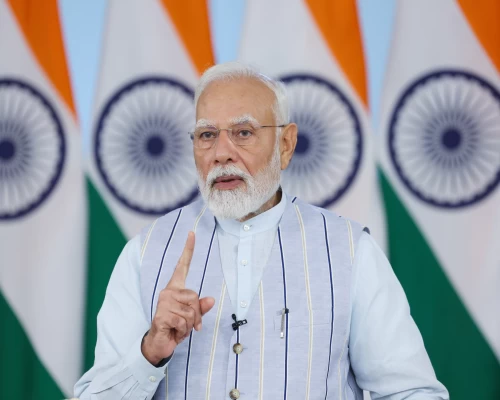
Health is an essential pillar. Literally! If we project India’s growth story over the next 25 years, this adage would help chart what the government and private healthcare players must focus on for the world’s most populous nation to also become the most prosperous one – ensuring timely access to quality, affordable healthcare to lower morbidity, mortality, and improve well-being of its 1.43 billion people.
There is no contesting the link between an individual’s good health, their ability to create wealth, and a country’s economic prosperity. As India works to grow into a $25-trillion economy, built on equitable development, it must adopt a multi-pronged approach to address the health challenges posed and deepened by changing demographics, lifestyle, mutating viruses, pandemics like COVID-19, and the climate crisis.
It must also find ways to tackle India’s traditional healthcare challenges such as inter-state and urban-rural disparities, below-average ratio of healthcare workers to patients, and gaps in hospital services between Tier-I, II and III cities. In this context, universal access to affordable healthcare takes on a new level of significance for India.
In this direction, India has made great strides in improving healthcare access and affordability with newer schemes under the National Health Policy, 2017. The government has launched a range of initiatives aimed at taking healthcare to the last mile, with a particular focus on and fillip from digital health technology.
For example, it set up more than 1.5 lakh Ayushman Bharat Health and Wellness Centres and created a network of over 9,000 Jan Aushadhi Kendras servicing 700 plus districts with quality generic medicines. But among the most significant initiatives taken towards ensuring universal coverage has been the Ayushman Bharat PM-Jan Arogya Yojana that covers close to 55 crore people, including India’s poorest 40 per cent by meeting hospital costs up to Rs 5 lakh per family per year.
While we may have seen the back of the COVID-19 pandemic, its ghosts of added-healthcare-burden are likely to continue haunting us. Long Covid, increase in non-communicable diseases, treatment deferral and worsened symptoms of existing conditions because of Covid – all these factors will likely add to become a source of economic burden in the near future. This is particularly worrying as a large chunk of our population is still concentrated in villages where, despite the network of primary and secondary healthcare centres, increased medical colleges and seats, doctor-patient ratio remains a work in progress.
This is where digital innovation – in play much before the start of the pandemic – is helping. The Government’s telemedicine app, eSanjeevani, has eliminated distance as a barrier to consult specialist doctors and bridged the urban-rural divide. In under three years of its launch, it has been able to help more than 10 crore people. The private sector too has taken several initiatives to bridge the last-mile gap and remove distance as an access barrier. In addition to telemedicine, which it is using to connect with patients even in the farthest corners and oversee their treatment, large-scale healthcare providers have even started remote critical care services (e-ICUs).
The government initiatives such as the National Health Stack and the National Digital Health Mission have created a robust foundation for the development of an integrated and seamless healthcare delivery system that greatly helps tertiary care providers deliver effective, efficient, and personalised care. With the rising number of smartphone users and proactive adoption of the digital health system, affordable solutions are reducing disparities in healthcare access and quality, especially among underserved and marginalised communities. These tools are also enabling promotion of disease prevention and early detection, which can help reduce the long-term burden of disease and associated costs, and ultimately improve the overall well-being of the population.
Moreover, digital health solutions can facilitate the collection and analysis of large-scale data that can inform public health interventions and policies. This can enable public and private sector healthcare providers to develop evidence-based strategies for disease control, outbreak management, and health promotion. For example, it can support the tracking of disease incidence and prevalence, which can help identify emerging health threats and develop appropriate interventions.
The government programmes, ingenuity of the private healthcare sector and adoption of digital health solutions are together redefining ‘universal affordable healthcare’ to represent an integrated system that not only ensures access but actively evolves to further reduce treatment costs and play an active role in disease prevention. /BI/
(The author is Chairman and Managing Director, Medanta Heart Institute, Gurugram)










 (13)_500_x_400.webp)


